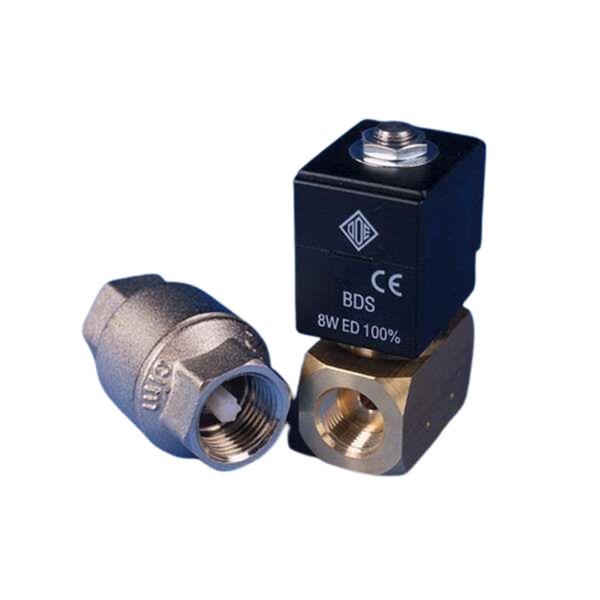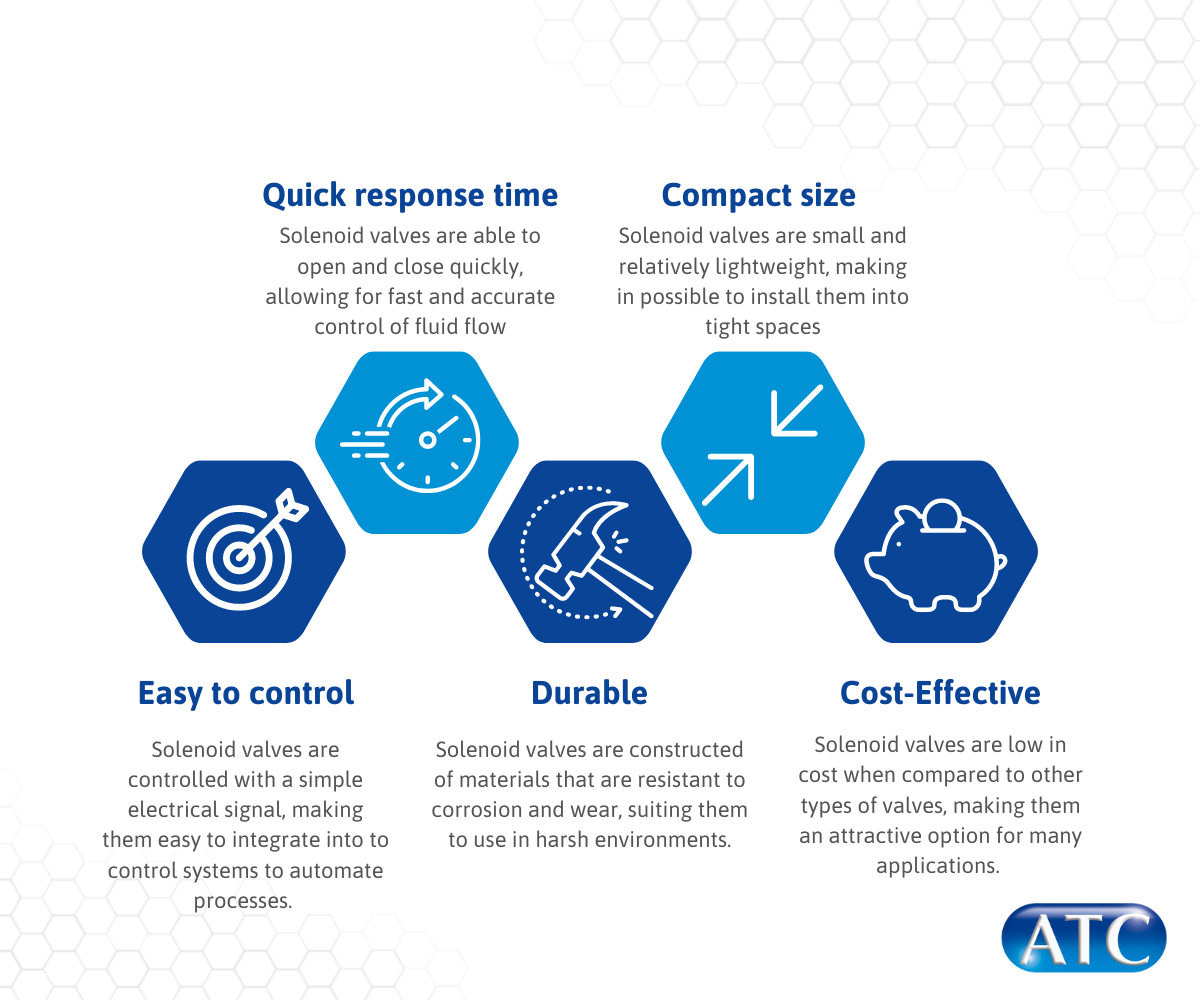
Non-return/Solenoid valves work by using an electrically
activated solenoid to control the flow of fluid through the valve. When the
solenoid is energised, a magnetic field is created, pulling the valve plunger
into the valve body, opening the flow path. When the solenoid is de-energised,
a spring in the valve pushes the plunger back into its original position,
closing the path again.
The use of solenoid valves can offer several benefits,
including:
Quick response time
Solenoid valves are able to open and close
quickly, allowing for fast and accurate control of fluid flow, making them
well-suited for use in process cooling systems where precise temperature
control is required.
Easy to control
Solenoid valves are controlled with a simple
electrical signal, making them easy to integrate into to control systems to
automate processes.
Compact size
Solenoid valves are small and relatively
lightweight, making in possible to install them into tight spaces or systems
that have limited room available for components.
Durable
Solenoid valves are constructed of materials
that are resistant to corrosion and wear, suiting them to use in harsh
environments.
Cost-effective
Solenoid valves are low in cost when compared to
other types of valves, making them an attractive option for many applications.

While solenoid valves offer many advantages when used in
process cooling equipment, there are also some drawbacks to consider:
Electrical dependence
- Solenoid valves rely on an electrical current to
operate, which means that they are not suitable for use in applications where
there is no electrical power available. If the electrical power is disrupted or
fails, the valve may not operate as intended.
Limited flow control
- Whilst
solenoid valves are able to open and close quickly, they are not typically
designed with fine flow control in mind. If precise control of fluid flow is
required, additional measures may be required.
Limited pressure range
- Solenoid
valves are designed for use at low to medium pressures, but may not be suitable
under high pressures.
Maintenance requirements
- As with any component, solenoid valves may be
subject to wear and tear, and may require replacement over time. If exposed to
high temperatures or corrosive fluids, the solenoid coil can become damaged.
When used in process cooling equipment, solenoid valves are
often used in conjunction with other components such as temperature sensors,
flow meters, and control systems to ensure efficient and accurate control.
Solenoid valves are often fitted to prevent back siphoning
of fluid into the chiller when it is turned off for refilling or maintenance.
They are recommended when the chiller and application are at
different levels (more than 2 metres height difference), or where a long length
of flexible tubing is used between the chiller and the application. It is also
advisable to add non-return/solenoid valves in situations where pipe-runs will
be going up into ceiling ducts.